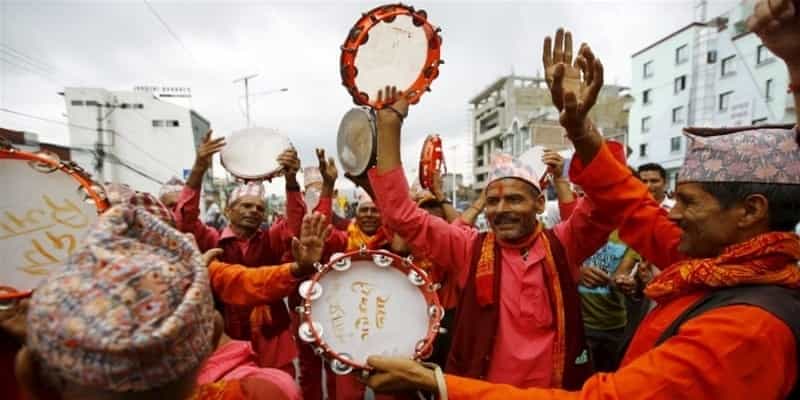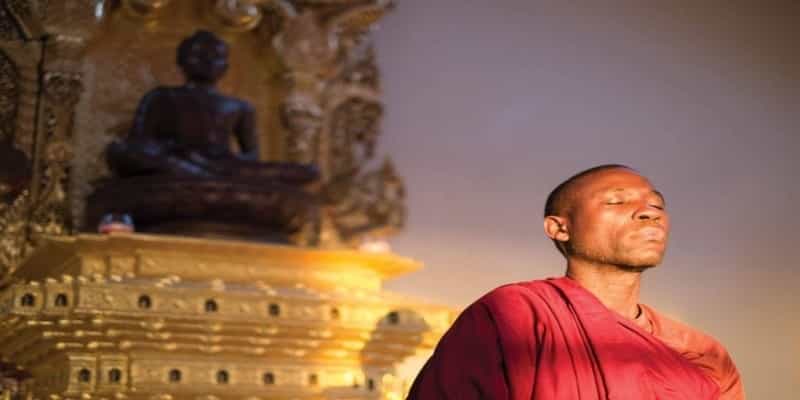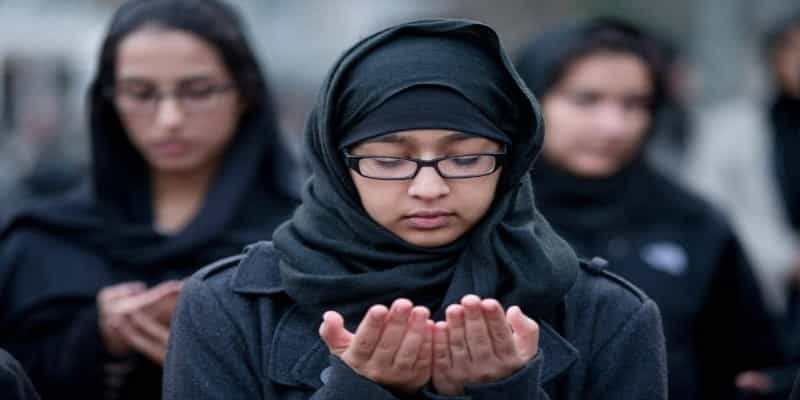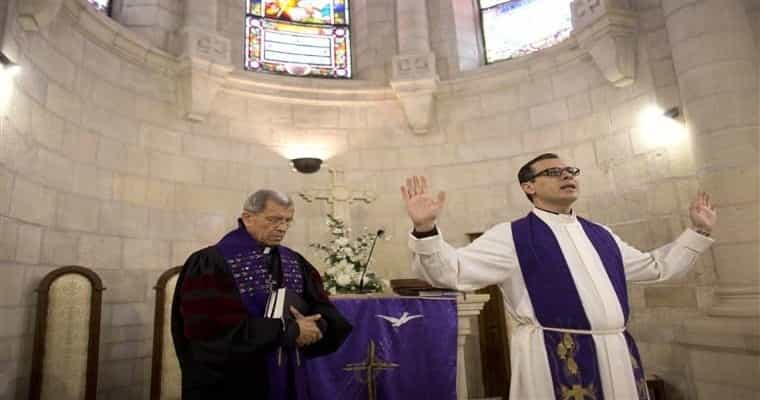Nepal, a picturesque country enshrined by the great Himalayas and home to the mighty Mt. Everest, boasts of its religious diversity ever since times immemorial. One of its unique features is how peoples of a different religion in Nepal such as Hinduism, Buddhism, Islam, Christianity are enmeshed together within the broader fabric of religious tolerance and harmony; finding its expression in the intermingling of different rituals, faiths, and festivities.
In this way, it puts forward an exemplary image of a nation characterized by the coexistence of different faiths at a time when a significant portion of the world is still in the firm grasp of communal tension and violence. The endeavour of trying to assess some of the prominent existing religious traditions in Nepal can prove to be fruitful with the exploration and outlining of each of its roots of origin, the extent of influence and the general forms manifested within the social setting of the country. Here is the list of 4 most followed religion in Nepal.
Contents
1. Hinduism

In Nepal, Hinduism is not just a repository of a passive and redundant set of beliefs or customs but is instead a way of living inculcating within the people important moral values like harbouring a sense of respect for one’s family customs, culture and towards other fellow beings. Being the most followed religion in Nepal, constituting of almost 80% of the population, its origin can be traced back to an ancient legend centering on an ascetic named Ne Muni, who thought to be the main propagator of it. He is also believed to have chosen the first ever king of Nepal, Raja Bhuktaman of the Gopala Dynasty. The country derives its name from that of the great sage. Many other ruling dynasties of Nepal like that of the Suryavanshi, Lichchavi, Thakuri had Hindu monarchs which led to its further widespread across the vast expanse of the country.
Important Hindu deities like Vishnu and Shiva are highly worshipped by the people. The triangular flag of Nepal with the symbol of the sun and moon is believed to represent Lord Vishnu. Apart from the two main gods of the Hindu pantheon, many others are worshipped as well as exhibiting the polytheistic tendencies prevalent among the people. Numerous festivals like Dolyatra, Krishna Janmashtami, Tihar, etc. are celebrated here with much grandeur. The country even boasts of sacred places dedicated to Hinduism like the temples of Pashupatinath, Budhanilkantha, and Janakpur which is considered to be the birthplace of Sita.
2. Buddhism

The significance of Buddhism religion in Nepal is primarily due to the location of the place named Lumbini within the boundaries of the country which is regarded as the birthplace of Prince Siddhartha who later on became Lord Buddha. The Shakyas and later on Ashoka contributed a lot to the dissemination of the religious order in the 16th and 17th century. However, it received a backseat during the era of the Rana dynasty, once again regaining momentum later on. At present, it constitutes about 9% of the total population according to the latest census data of 2011.
The religion is intricately entangled with Hinduism in this particular country. The Tibetan Sect of Buddhism, an extension of the Mahayana Order, is quite predominant here and shares many beliefs similar to that of Hinduism. Like Hinduism, this sect also has faith in numerous pantheon, even though Buddha is the most revered one from the rest.
Like the Hindus, they seek recourse to such forces to get rid of all worldly pains and sufferings, which according to them is a state of nirvana similar to the moksha concept of Hinduism. They have immense faith in the karma theory as well, another trait which they share with Hindu religious beliefs. In places like the Muktinath Temple, both Hindus and Buddhists can offer their prayer where Hindu festivals like Indrayatra is celebrated alongside Buddhist ones. The Buddhist pilgrimage site Boudhanath enjoys the privilege of being classified as one of UNESCO’s World Heritage Sites.
3. Islam

Islam religion in Nepal occupies the third position after Hinduism and Buddhism and incorporates about 4.4% of the total population. The early Muslims were primarily of Kashmiri, Persian, and Afghani in origin who used to serve as the courtiers, musicians, arms trainer and counsellor under Hindu Kings. Later on, many immigrants from this religion settled in Nepal fleeing from India during the revolt of 1857 and also from China many years later during the 1970 s after the Communist takeover of the regime.
At present, Muslims have mainly settled down in the Terai region of Southern Nepal. The presence of essential mosques like Kashmiri Takia and places like Raki Bazar vividly indicates the existence of a prominent Islamic Culture in the country.
4. Christianity

Christianity constitutes a minority religion in Nepal with only 1.4% of the total population falling within its sphere. This has been the case primarily due to the restrictions that were there on the entry and regarding the stay of Christians in the country till 1951. After that things started improving a bit for them with the construction of the church in the Pokhara and due to the increasing activities of Christian Missionaries in welfare-related tasks like the building of schools, hospitals, etc. However, conversion to Christianity was still deemed as illegal and such stringent rules were relaxed a bit after the 1990 s after the introduction of multi-party democracy in Nepal.
Nonetheless, this community has remained victimized to a great extent. But the only positive thing in this matter is that this has never led to the culmination of any violent act against the people belonging to this religious order.
Conclusion
The four most followed religions in Nepal are Hinduism, Buddhism, Islam & Christianity with 80%, 9%, 4.4% & 1.4% respectively. Apart from these four main religions of Nepal, about 0.9% of the people belong to other religious orders like Sikhism, Jainism, Kiratism, etc. Overall Nepal is home to people coming from different and diverse religious backgrounds with a sense of mutual understanding and respect for one another’s beliefs and traditions existing in a state of peaceful coexistence with one another.

